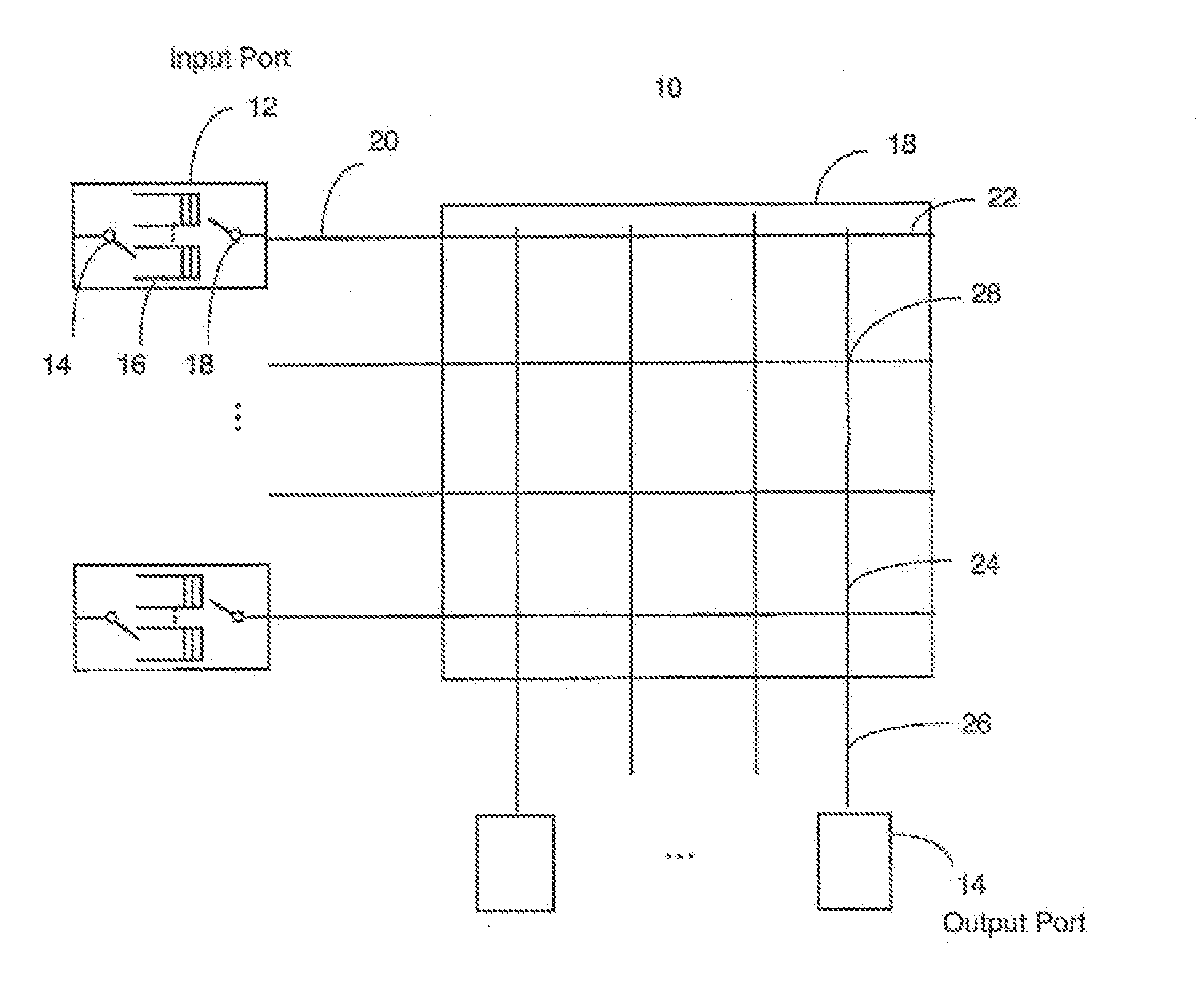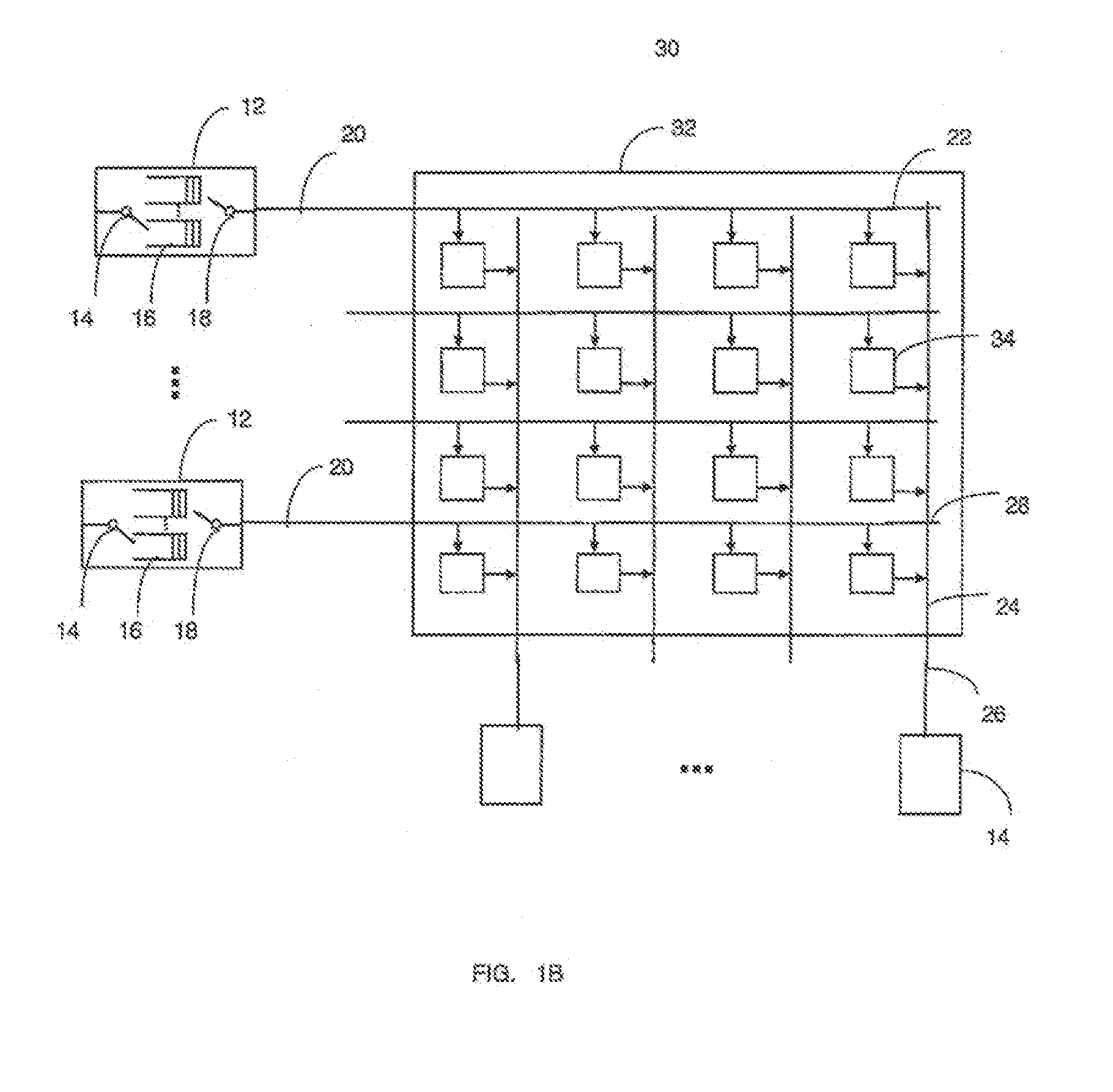Crossbar switch and recursive scheduling
a crossbar switch and scheduling technology, applied in the field of communication devices and methods, can solve the problems of complex scheduling algorithms, impracticality of large switches, and difficulty in scheduling traffic through iq switches, so as to reduce memory requirements, reduce switch delays, and reduce memory requirements
- Summary
- Abstract
- Description
- Claims
- Application Information
AI Technical Summary
Benefits of technology
Problems solved by technology
Method used
Image
Examples
Embodiment Construction
[0053]FIG. 1A illustrates a conventional N×N input queued (IQ) switch 10. IQ Switch 10 has N input ports 12-1, 12-2, . . . , 12-N, herein collectively and individually referred to as input ports 12. IQ Switch 10 has N of ports 14-1, 14-2, . . . , 14-N, herein collectively and individually referred to as output ports 14. Each input port 12 has a demultiplexer switch 14, N Virtual Output Queues (VOQs) 16, and a multiplexer switch 18, also called a server 18. A cell is a packet with a fixed size, typically 64 or 256 bytes. Each incoming cell of data contains a tag which identifies the desired output port of the IQ switch. Each incoming cell is forwarded through the demuitiplexer switch 14 to the VOQ 16 associated with the desired output port. Assume the input ports 12 are labelled from 1 up to N, starting from the top of FIG. 1A. Assume the output ports 14 are labelled from 1 up to N, starting from the left side of FIG. 1A. Let the N VOQs 16 at each input port j be denoted VOQ(j,k) 16,...
PUM
 Login to View More
Login to View More Abstract
Description
Claims
Application Information
 Login to View More
Login to View More - R&D
- Intellectual Property
- Life Sciences
- Materials
- Tech Scout
- Unparalleled Data Quality
- Higher Quality Content
- 60% Fewer Hallucinations
Browse by: Latest US Patents, China's latest patents, Technical Efficacy Thesaurus, Application Domain, Technology Topic, Popular Technical Reports.
© 2025 PatSnap. All rights reserved.Legal|Privacy policy|Modern Slavery Act Transparency Statement|Sitemap|About US| Contact US: help@patsnap.com



